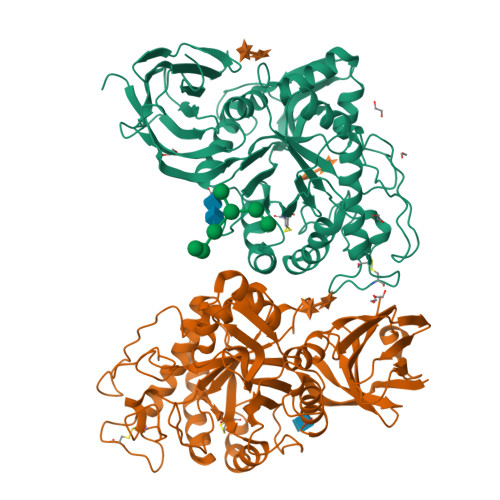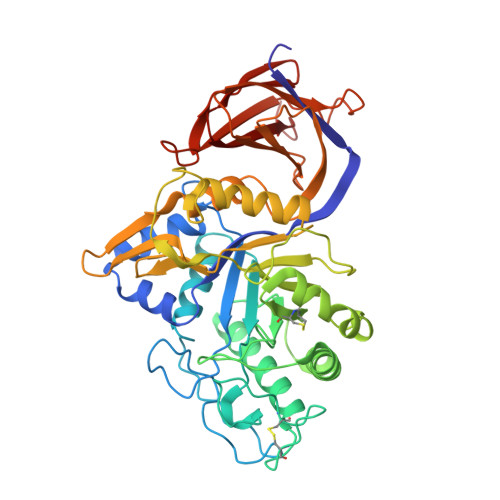Structural and molecular insights into a bifunctional glycoside hydrolase 30 xylanase specific to glucuronoxylan.
Pentari, C., Kosinas, C., Nikolaivits, E., Dimarogona, M., Topakas, E.(2024) Biotechnol Bioeng 121: 2067-2078
- PubMed: 38678481
- DOI: https://doi.org/10.1002/bit.28731
- Primary Citation of Related Structures:
8C48, 8CBC, 8P67 - PubMed Abstract:
Glycoside hydrolase (GH) 30 family xylanases are enzymes of biotechnological interest due to their capacity to degrade recalcitrant hemicelluloses, such as glucuronoxylan (GX). This study focuses on a subfamily 7 GH30, TtXyn30A from Thermothelomyces thermophilus, which acts on GX in an "endo" and "exo" mode, releasing methyl-glucuronic acid branched xylooligosaccharides (XOs) and xylobiose, respectively. The crystal structure of inactive TtXyn30A in complex with 2 3 -(4-O-methyl-α-D-glucuronosyl)-xylotriose (UXX), along with biochemical analyses, corroborate the implication of E233, previously identified as alternative catalytic residue, in the hydrolysis of decorated xylan. At the -1 subsite, the xylose adopts a distorted conformation, indicative of the Michaelis complex of TtXyn30AEE with UXX trapped in the semi-functional active site. The most significant structural rearrangements upon substrate binding are observed at residues W127 and E233. The structures with neutral XOs, representing the "exo" function, clearly show the nonspecific binding at aglycon subsites, contrary to glycon sites, where the xylose molecules are accommodated via multiple interactions. Last, an unproductive ligand binding site is found at the interface between the catalytic and the secondary β-domain which is present in all GH30 enzymes. These findings improve current understanding of the mechanism of bifunctional GH30s, with potential applications in the field of enzyme engineering.
Organizational Affiliation:
Industrial Biotechnology & Biocatalysis Group, Biotechnology Laboratory, School of Chemical Engineering, National Technical University of Athens, Athens, Greece.

























